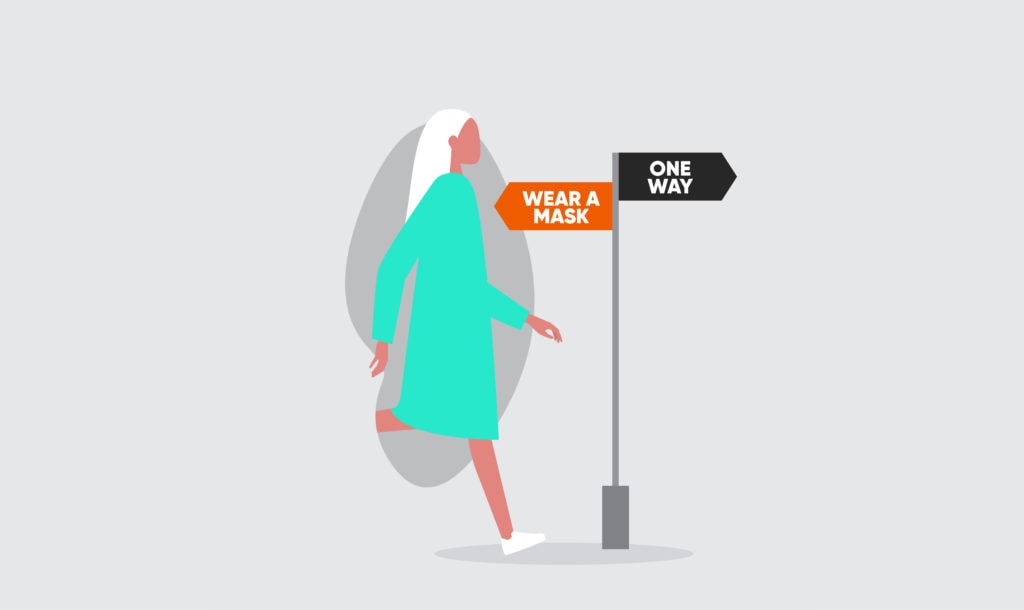What we do
Combining our three core specialisms with cross sector experience from a world-class team, we transform businesses through the built environment and enhance the way people work.
Tips for wayfinding to navigate a COVID safe workplace.

As we move forwards into a post lockdown world with restrictions gradually easing, you’ll want to carefully consider your next step – in more ways than one.
Planning for the safe transition back into the workplace needs to consider how to shift behaviour patterns away from usual office activity and into more cautious and considered practices that can uphold safe social distancing measures.
Part of your planning process will need to consider how to move your teams safely around your workplace, how to exit and enter the building, and the spaces within your demise.
Well-designed way-finding systems and signage are a safe and effective way of doing this and when carefully implemented, can encourage practices to help navigate people through your office, while minimising the risk of infection.
The following are some strategies for consideration in designing your wayfinding and graphics systems:
The best way to start planning your wayfinding and signage strategies is to consider what and how employees will need to utilise your office as they journey through their day. Consider the processes that make up their day and in what order they will move through each part of this.
Occupancy analytics can be useful in helping you to understand how your staff move through the workplace, but it’s important to align these with your new office floor plans which may need to be adjusted for safe social distancing.
Once you have these fundamentals, you can then formulate strategies for how to move them from point A to point B while minimising the risk of interaction and unsafe distances.
Much like we’ve seen recently rolled out in supermarkets, using appropriate signage displays either on the floor or otherwise to help delineate safe distancing practices can assist with pushing flows of traffic through your space in a safe manner.
Using your considered journey mapping, delineate walking routes around your space that reduce human interaction. You may want to consider adopting a one-way flow strategy or, if your space allows it, marking out wider corridors and colour coding each side with the desired traffic direction.
Similarly, colour coding methods can be utilised to indicate safe social distancing measurements around desks by changing your floor finishes to alternative colourings. More temporary sticker solutions can be placed on doors and walls, and non-slip self-adhesive floor graphics can be placed anywhere we interact with the physical environment.
Consider managing queues in places like tea points or lifts where people might congregate to wait by placing floor graphics or tape at 2 metre distances.
Contrary to usual wayfinding measures which are often intentionally subliminal, a much more obvious strategy is required in the face of COVID-19. Consider the material, size, colour and location of your wayfinding and other signage to ensure they stand out and make an impression upon the user. You may want to consider integrating your company branding into your signs so that they complement your space, but it is important to ensure they still stand out.
Digital wayfinding solutions such as LED signage or integrated lighting systems can be more aesthetically pleasing and eye catching, while also allowing you to be more flexible and timely with your messaging.
The final piece of the puzzle is awareness signage to promote good practice. Things like hand washing protocols, symptoms awareness and general prevention awareness. These should be placed frequently and appropriately around your workplace in areas of relevance to help raise awareness and ensure your staff remain constantly alert to the behavioural changes required in safeguarding your workplace.